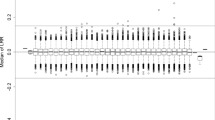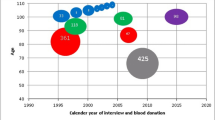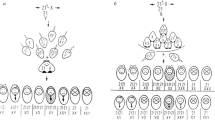Abstract
LINDSTEN et al. suggested that the locus controlling the Xga sex-linked red-cell antigen was on the short arm of the X chromosome1 on the basis of a study of two women with a presumptive isochromosome for the long arm of the X (Xqi) and a normal X chromosome. Both were Xg(a −), but their fathers were Xg(a +), and it seemed that the paternal Xga allele for the dominant Xg(a +) character had not been transmitted to them. Because the abnormal Xs of the two patients lacked the short arms, it seemed that the Xg locus could be on the short arms of the X. But this interpretation rested on the evidence of paternity and on two assumptions: first, that the 45,X cells, present in both subjects (both were mosaics with a 45,X cell line), were not responsible for the observed genetic exception; and second, that the Xg locus escaped2–4 the alleged preferential inactivation of structurally abnormal X chromosomes, in which case a paternal Xga allele should manifest its presence if the locus were on the long arm of the X.
This is a preview of subscription content, access via your institution
Access options
Subscribe to this journal
Receive 51 print issues and online access
$199.00 per year
only $3.90 per issue
Buy this article
- Purchase on Springer Link
- Instant access to full article PDF
Prices may be subject to local taxes which are calculated during checkout
Similar content being viewed by others
References
Lindsten, J., Fraccaro, M., Polani, P. E., Hamerton, J. L., Sanger, R., and Race, R. R., Nature, 197, 648 (1963).
Gorman, J. G., Di Re, J., Treacy, A. M., and Cahan, A., J. Lab. Clin. Med., 61, 642 (1963).
MacDiarmid, W. D., Lee, G. R., Cartwright, G. E., and Wintrobe, M. M., Clin. Res., 15, 132 (1967).
Lee, G. R., MacDiarmid, W. D., Cartwright, G. E., and Wintrobe, M. M., Blood, 32, 59 (1968).
Polani, P. E., in The Sex Chromatin (edit. by Moore, K. L.), 342 (Saunders, Philadelphia and London, 1966).
Noades, J., Gavin, J., Tippett, P., Sanger, R., and Race, R. R., J. Med. Genet., 3, 162 (1966).
Race, R. R., and Sanger, R., Blood Groups in Man, fifth ed., 524 (Blackwell Scientific Publications, Oxford and Edinburgh, 1968).
Giannelli, F., and Howlett, R. M., Cytogenetics, 6, 420 (1967).
Giannelli, F., Human Chromosomes DNA Synthesis, Monog. Human Genetics (edit. by Beckman, L., and Hauge, M.), 5 (Karger, Basel and New York, 1970).
Giannelli, F., Lancet, i, 863 (1963).
Lawler, S. D., and Sanger, R., Lancet, i, 584 (1970).
Court Brown, W. M., Harnden, D. G., Jacobs, P. A., Maclean, N., and Mantle, D. J., Abnormalities of the Sex Chromosome Complement in Man, MRC Special Rep. Series, No. 305 (HMSO, London, 1964).
de Grouchy, J., Lamy, M., Yaneva, H., Salomon, Y., and Netter, A., Lancet, ii, 777 (1961).
de la Chapelle, A., Acta Endocrinol., Suppl. 65, 40, 1 (1962).
Engel, E., and Forbes, A. P., Medicine, 44, 135 (1965).
Ferguson-Smith, M. A., Alexander, D. S., Bowen, P., Goodman, R. M., Kaufmann, B. N., Jones, jun., H. W., and Heller, R. H., Cytogenetics, 3, 355 (1964).
Fraccaro, M., and Lindsten, J., in Cytogenetics of Cells in Culture (edit. by Harris, R. J. C.), 3, 97 (Academic Press, New York and London, 1964).
Polani, P. E., in Proc. Second Intern. Con. Human Genet., Rome, September, 1961, 2, 1135 (Istituto G. Mendel, Rome, 1963).
Author information
Authors and Affiliations
Rights and permissions
About this article
Cite this article
POLANI, P., ANGELL, R., GIANNELLI, F. et al. Evidence that the Xg Locus is Inactivated in Structurally Abnormal X Chromosomes. Nature 227, 613–616 (1970). https://doi.org/10.1038/227613a0
Received:
Issue Date:
DOI: https://doi.org/10.1038/227613a0
Comments
By submitting a comment you agree to abide by our Terms and Community Guidelines. If you find something abusive or that does not comply with our terms or guidelines please flag it as inappropriate.



